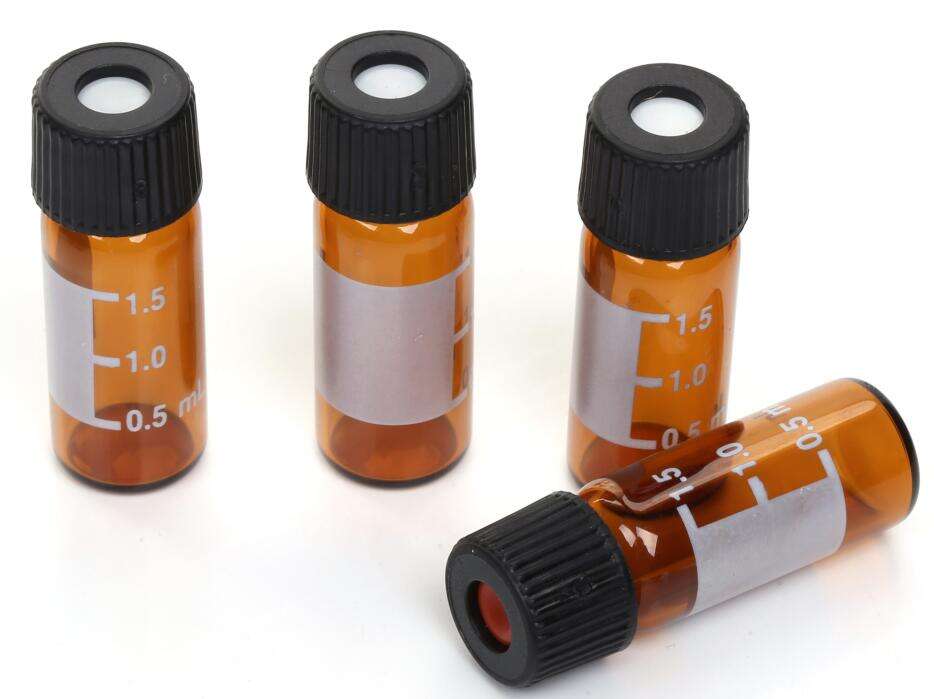Understanding HPLC Vial Selection for Optimal Sample Protection
When working with high-performance liquid chromatography, the choice of HPLC vials plays a crucial role in maintaining sample integrity and ensuring accurate analytical results. These specialized containers protect valuable samples from contamination, degradation, and other environmental factors that could compromise the quality of analysis. Selecting the right HPLC vials requires careful consideration of various factors, from material composition to design features that safeguard sensitive samples.
Laboratory professionals must navigate through multiple options to find HPLC vials that match their specific analytical requirements. The wrong choice can lead to sample loss, contamination, or degradation, potentially invalidating results and necessitating costly repeat analyses. This comprehensive guide explores the various types of HPLC vials available and helps you make informed decisions for your sensitive sample analysis needs.
Material Composition of HPLC Vials
Glass HPLC Vials
Glass remains the most widely used material for HPLC vials, offering excellent chemical resistance and optical clarity. Type I borosilicate glass, in particular, stands out for its superior chemical inertness and thermal stability. These properties make it ideal for storing and analyzing sensitive samples that might react with other materials.
Different grades of glass HPLC vials cater to specific analytical needs. Clear glass vials provide visual sample inspection capabilities, while amber glass vials offer protection against light-sensitive compounds. Some manufacturers also produce silanized glass vials, which feature a special surface treatment that prevents active compounds from adhering to the glass surface.
Plastic HPLC Vials
Polypropylene and polyethylene HPLC vials offer advantages for certain applications, particularly when working with samples that might interact with glass or when breakage is a concern. These plastic vials are especially useful for analyzing metal-sensitive compounds, as they eliminate the risk of metal ion contamination that can occur with glass.
Modern plastic HPLC vials incorporate advanced polymers that provide improved chemical resistance and reduced leaching. However, users should be aware of potential limitations, such as reduced temperature stability and possible compatibility issues with certain organic solvents.

Design Features for Sample Protection
Septa and Closure Systems
The sealing mechanism of HPLC vials significantly impacts sample preservation. Pre-slit septa allow multiple injections while maintaining seal integrity, while bonded septa eliminate the risk of separation during puncture. Different septum materials, such as PTFE/silicone or PTFE/rubber combinations, offer varying degrees of chemical resistance and resealing capabilities.
Advanced closure systems may include features like integrated seals and snap-caps that provide reliable containment while simplifying handling. Some manufacturers offer specialized closure systems designed specifically for automated sampling systems, ensuring consistent performance during high-throughput analyses.
Volume Optimization Features
Modern HPLC vials incorporate design elements that optimize sample volume usage. Limited volume inserts and conical bottom designs help minimize dead volume, allowing for maximum sample recovery. This becomes particularly important when working with precious or limited quantity samples.
Manufacturers now offer HPLC vials with various internal volume configurations, from standard 2mL designs to specialized microvials that accommodate volumes as small as 100μL. These innovations help laboratories reduce sample waste while maintaining analytical precision.
Specialized HPLC Vials for Demanding Applications
Certified Low Adsorption Vials
For ultra-trace analysis or highly sensitive compounds, certified low adsorption HPLC vials provide superior sample protection. These vials undergo rigorous quality control processes to ensure minimal surface activity and reduced risk of sample loss through adsorption. Special surface treatments and manufacturing processes help maintain sample integrity even for compounds prone to surface interactions.
Some manufacturers offer vials with guaranteed performance specifications for specific analytical parameters, such as metal content, extractables, or adsorption characteristics. This certification provides analysts with additional confidence in their analytical results.
Temperature-Resistant Solutions
When working with high-temperature applications or samples requiring thermal stability, specially designed HPLC vials offer enhanced temperature resistance. These vials maintain their structural integrity and sealing properties across a wider temperature range, preventing sample loss or contamination during storage or analysis.
Advanced manufacturing techniques produce vials with improved thermal shock resistance, reducing the risk of breakage during temperature transitions. This becomes particularly important in automated systems where thermal cycling may occur.
Frequently Asked Questions
How Do I Choose Between Glass and Plastic HPLC Vials?
Consider your sample's chemical properties and analytical requirements. Choose glass vials for broad chemical compatibility and when optical clarity is important. Opt for plastic vials when working with metal-sensitive compounds or when breakage resistance is crucial. Always verify material compatibility with your specific mobile phase and sample components.
What Are the Best HPLC Vials for Light-Sensitive Samples?
Amber glass HPLC vials provide the best protection for light-sensitive samples. These vials block harmful UV wavelengths while maintaining the chemical inertness of standard glass vials. For maximum protection, combine amber vials with appropriate storage conditions away from direct light exposure.
How Can I Minimize Sample Loss in HPLC Vials?
To minimize sample loss, select vials with appropriate volume optimization features like conical bottoms or limited volume inserts. Use certified low adsorption vials for sensitive compounds, and ensure proper septa selection to prevent evaporation. Regular system maintenance and proper handling procedures also help reduce sample loss during analysis.



